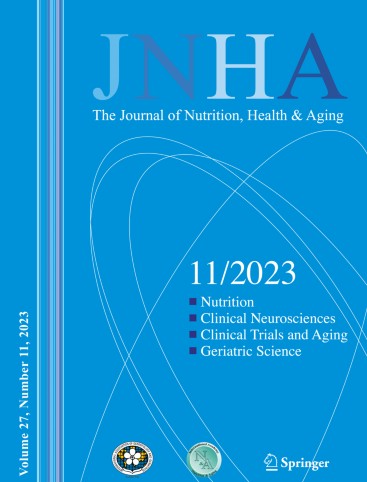Comparative analysis of frailty identification tools in community services across the Asia-Pacific: A systematic review and meta-analysis
IF 4.3
3区 医学
Q1 GERIATRICS & GERONTOLOGY
引用次数: 0
Abstract
Objectives
This study aimed to compare various frailty screening and assessment tools with the Frailty Phenotype (FP), Frailty Index (FI), and Comprehensive Geriatric Assessment (CGA), which are considered the current gold standards, among the Asia-Pacific population in community settings.
Design
Systematic review and meta-analysis.
Setting and participants
This review included studies evaluating frailty identification tools based on the criteria of population, index and reference tests, and diagnosis of interest.
Methods
A diagnostic test accuracy review was conducted to assess frailty instruments recommended by the Asia-Pacific Clinical Practice Guidelines. Comprehensive electronic database searches and manual searches were conducted up to August 20, 2024. Study quality, including risks of bias and applicability, was assessed using the QUADAS-2 tool. Hierarchical analysis and Youden’s index were employed to identify the optimal tool and cutoff points, and pooled frailty prevalence was calculated.
Results
Fourteen studies were included: 10 for the FRAIL scale, 3 for TUG, and 2 for the SOF index (screening tools), and 2 each for the CFS and KCL, and 1 for the REFS (assessment tools). All studies demonstrated a high risk of bias. The pooled sensitivity and specificity for screening tools were 0.63 and 0.89, respectively, whereas for assessment tools, they were 0.79 and 0.85. The pooled prevalence of frailty and pre-frailty was 19.7% and 31.7%, respectively. The pooled diagnostic odds ratios were highest for the FRAIL scale (15.72) and CFS (35.03) among the screening and assessment tools. The subgroup analysis revealed that the setting had no significant impact on screening tool performance (p = 0.58), but a borderline significant effect was observed for assessment tools (p = 0.06), although this result is limited by the small number of studies, with only one conducted in a community setting. The FRAIL scale, with a cutoff of 2, had a Youden’s index of 0.60, signifying optimal screening performance.
Conclusion
Among the frailty instruments recommended by the Asia-Pacific Clinical Practice Guidelines, this meta-analysis identifies the FRAIL scale as the most robust tool for distinguishing frailty, with a cutoff of 2 significantly enhancing diagnostic accuracy. Furthermore, the estimated prevalence of frailty in the Asia-Pacific region is 19.7% across various community settings, underscoring the need for further research and the development of validated assessment tools tailored to this population.
求助全文
约1分钟内获得全文
求助全文
来源期刊
CiteScore
7.80
自引率
3.40%
发文量
136
审稿时长
4-8 weeks
期刊介绍:
There is increasing scientific and clinical interest in the interactions of nutrition and health as part of the aging process. This interest is due to the important role that nutrition plays throughout the life span. This role affects the growth and development of the body during childhood, affects the risk of acute and chronic diseases, the maintenance of physiological processes and the biological process of aging. A major aim of "The Journal of Nutrition, Health & Aging" is to contribute to the improvement of knowledge regarding the relationships between nutrition and the aging process from birth to old age.

 求助内容:
求助内容: 应助结果提醒方式:
应助结果提醒方式:


